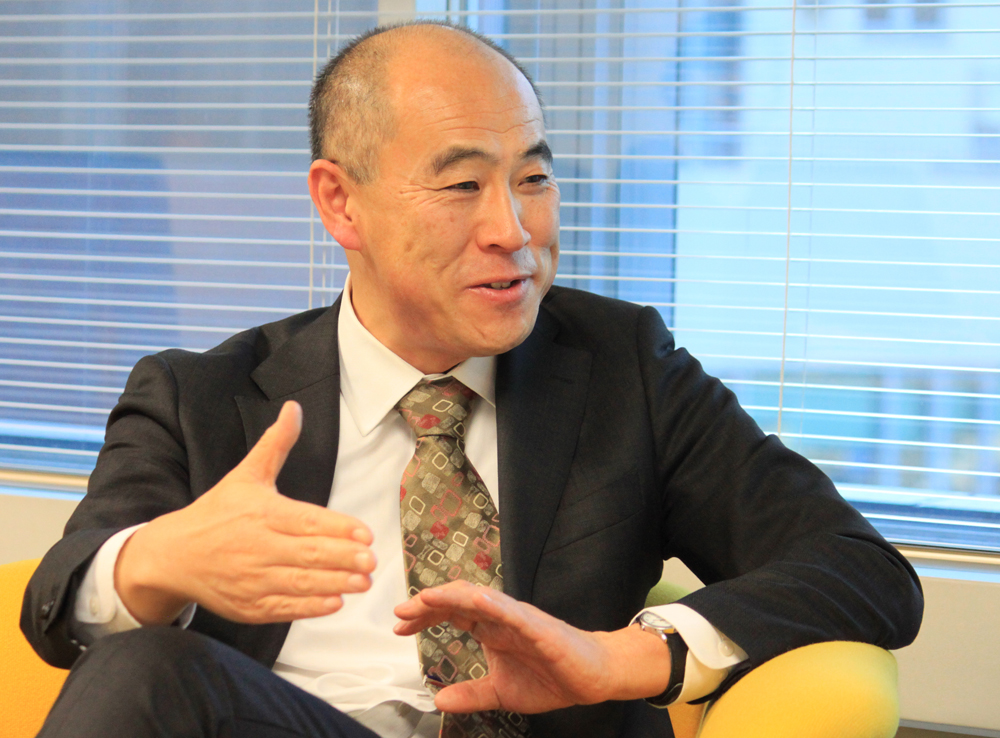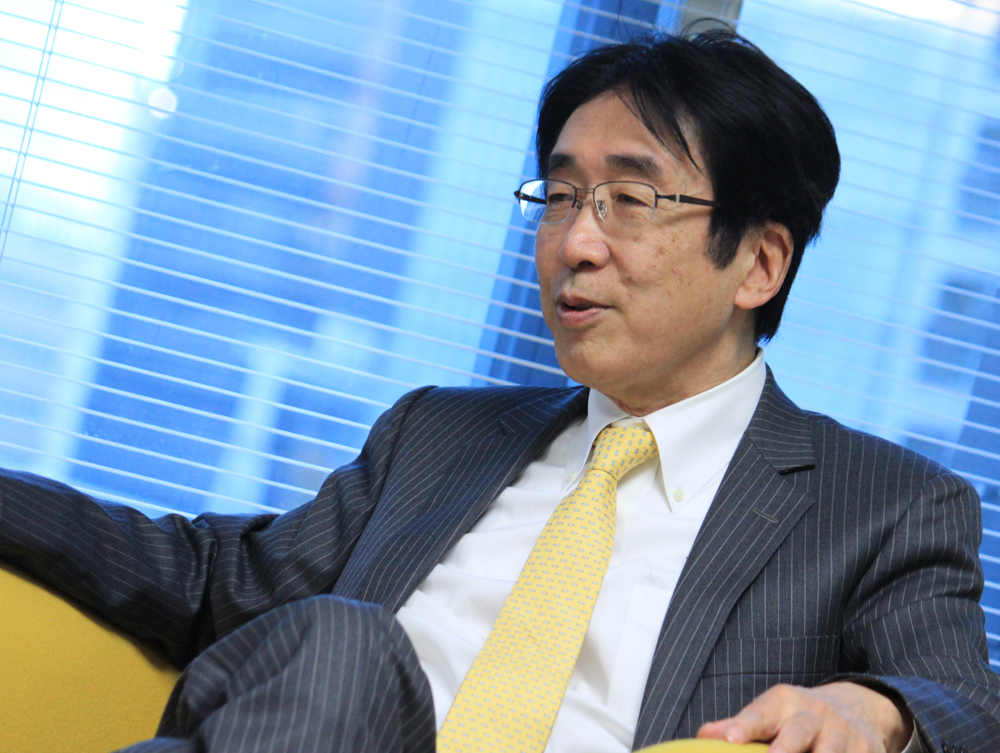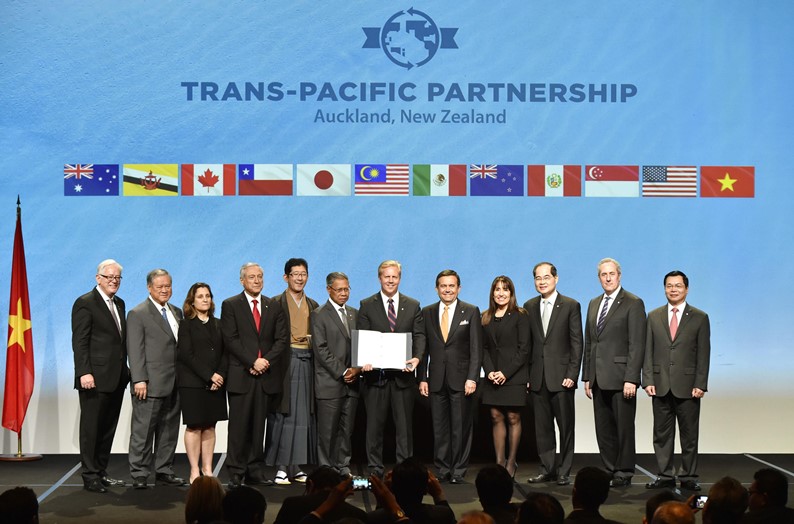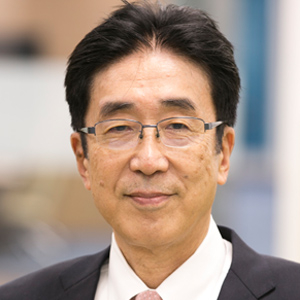- Article
- Macroeconomics, Economic Policy
The Japanese Economy in 2017 (2): Bumps on the Road to Deregulation and Free Trade
February 21, 2017
In the second half of a dialogue on Japan’s economic outlook in the coming year, two Tokyo Foundation economists discuss the need for further deregulation and review Japan’s options in the face of a growing backlash against globalization.
* * *

HOSHI: Let’s turn now to the third “arrow” of Abenomics: a long-term growth strategy based on structural reform. This is a policy area in which you’re closely involved. How would you rate the administration’s performance in this area?
HATTA: I’ve heard complaints to the effect that the third arrow hasn’t made much headway, but I think Mr. Abe has accomplished considerably more in deregulation than previous administrations.
The most notable example is reform of the power sector. The retail electricity market was opened up in April 2016, and now households and small shops can choose from many suppliers offering a variety of rate schedules. The unbundling of power generation and transmission services into separate companies, moreover, is scheduled to take place in 2020.
These reforms met fierce resistance not only from the electric utilities, which have tremendous political influence, but also from the countless businesses that had thrived by supplying materials to the utilities at inflated prices. It was a vast nationwide network of businesses that were shielded from competition by the system of setting electricity rates on the basis of the utilities’ total costs.
But the nuclear power accident triggered by the March 2011 tsunami damaged the public’s confidence in the utilities and ramped up the pressure to reform the industry. The Abe cabinet succeeded in passing the reform bill, and that was a major achievement in my opinion.
We’re also seeing progress in the area of agriculture. The reform of JA-Zenchu [Central Union of Agricultural Cooperatives] and other measures are leading to the liberalization of Japan’s nationwide farm cooperative system. The Abe government removed the special privileges that the cooperatives had enjoyed since World War II. Another big step forward for agricultural reform was the relaxation of restrictions on corporate ownership of farmland through an amendment of the Act on National Strategic Special Zones. As a result, Nakabayashi, a leading provider of academic journal binding services for university libraries and other home/office products, was able to begin cultivating garlic in the city of Yabu in Hyogo Prefecture during the off-peak season of its core business.
Reforms like these, which are still in their early phases, are going to have a major impact on the economy further down the line.
HOSHI: The Abe administration has been making progress on these reforms compared to earlier cabinets. The administration has exceeded my expectations, although I have to say they were very low to begin with. But going forward, I worry that it’s trying to do too many things without much focus. And while the policies you mentioned are promising, some of the growth strategies the prime minister has outlined are all too reminiscent of the old-fashioned industrial policy the Japanese government embraced in the past.
With the economy at the level of full employment, structural reform will be of the utmost importance in achieving robust growth going forward. But we need a sharper focus. After electricity and agricultural reform, where do you think the government should place its top priority?
From Subsidies to Regulatory Reform

HATTA: One area is the so-called sharing economy. Japanese laws and regulations used to completely shut out many peer-to-peer services. For example, Japan’s Hotel Business Law disallowed services like Airbnb that allows people to offer their private homes as tourist accommodations.
Now, under conditions spelled out in the Special Zones Act, people can legally rent out space without a hotel license.
On the other hand, stiff resistance from the taxi industry has completely blocked the introduction of ride-sharing services like Uber. The biggest demand for such services is in rural communities, where the population is in decline. These are places where you need a car to get around, but taxis are few and far between. Even in these locales, though, efforts to introduce ride sharing have failed so far.
Another promising area is the development and commercial application of new technologies like drones, self-driving cars, robots, and artificial intelligence. Our regulations have not anticipated such technological development, and they make it difficult even to test these new technologies. I recently witnessed a test flight of a drone off the coast of Chiba Prefecture. But even for a 700-meter flight over the water, there were something like 20 regulations that needed to be followed. The hope is that such drones could eventually be used without red tape for delivery of packages, since the marginal cost of delivery is quite low.

Many of our safety regulations have traditionally been set as requirements for specifications rather than for performance. But with the new technology, we need to shift the focus to performance. Why not let developers and manufacturers come up with their own ideas on the best way to achieve regulated safety performance? We shouldn’t quibble about specifications as long as the end product performs as it’s supposed to.
HOSHI: Should we change our basic approach to regulation?
HATTA: Yes, I think we should. Robots are a case in point. Of all of Japan’s major cities, Kitakyushu has the highest proportion of elderly residents, and it also happens to be headquarters to Yaskawa Electric, a top manufacturer of industrial robots. So, in April 2016, Kitakyushu was designated a special zone for the use of robots in nursing care, exempting it from some of the stringent regulations governing minimum room size in nursing-care facilities and enabling institutions to adapt their layout to the use of new technology. For example, they can remove some of the walls to facilitate the movement of care-giving robots and create open spaces for the use of automated walking aids. With these automated aids, rehab patients can practice walking without a physical therapist on hand. They’re currently testing them to gauge their benefits.
HOSHI: You’re advocating changing our approach to regulation so as not to frustrate technological innovation. Abe’s growth strategy expressly refers to robots and AI as potential growth industries, but it seems to be taking an industrial-policy approach centered on government subsidies and support for select technologies. I don’t get the sense that there’s much emphasis on encouraging innovation and growth through deregulation.
HATTA: Subsidizing specific industries and technologies provides only a short-term boost, so it’s not very effective over the long run. What we really need now is regulatory reform to open up corporate farming, spread the use of robots, and so forth.
Globalization and Redistribution

HOSHI: Another pivotal element of the administration’s growth strategy—one that got a lot farther than I expected—was participation in the Trans-Pacific Partnership. One of the points that Anil Kashyap and I stressed in our NIRA [National Institute for Research Advancement] Reports on Why Did Japan Stop Growing? [2011] and Policy Options for Japan’s Revival [2012] is that liberalizing international trade and investment and opening up the Japanese economy to the world wouldn’t just benefit consumers. By exposing Japanese industry to international competition, it would promote higher productivity, which is essential for economic growth. Plus, it would open up new markets for innovative and competitive Japanese companies. That’s why the Abe government placed high hopes in the TPP as part of its growth strategy. In addition to the direct benefit to consumers, opening up the Japanese economy has the potential to accelerate regulatory reform in various sectors. But now, after coming this far, the TPP may not survive.
The TPP was originally a four-way economic partnership between Singapore, New Zealand, Chile, and Brunei, which came into effect in May 2006. Then, in 2010, the United States took the lead in negotiations aimed at turning it into a comprehensive free trade agreement for the twenty-first century. Japan joined the talks in 2013, and in March 2016, all twelve negotiating parties signed onto a basic agreement. The next stage was ratification. But now Trump has taken the United States out of the pact, and to be fair, Hillary Clinton probably would have done the same had she won the election. The upshot is that Japan has been left at the altar.
Trump’s rejection of the TPP and his talk of renegotiating the North American Free Trade Agreement are part of a larger trend. Inward-looking, antiglobalization forces are gaining momentum in countries around the world. The Brexit referendum is a case in point.
HATTA: What do you think are the fundamental causes of this antiglobalist backlash?
HOSHI: The simplest answer—and I think this largely accounts for the backlash in the United States—is that a lot of people blame globalization for the loss of jobs, the erosion of the middle class, and rising economic inequality. This belief is behind much of the opposition to globalization among American voters.
HATTA: Do you think that applies to Brexit as well?
HOSHI: In Britain’s case, nationalist anti-EU sentiment was exacerbated by the influx of immigrants who competed with working-class citizens for jobs. Of course, there’s growing anti-immigrant sentiment in the United States as well.
HATTA: On the other hand, globalization has caused wages to rise in the developing world. I wonder to what extent the anti-globalization sentiment is shared by the developing nations today. In the past, much of the argument against globalization in America focused on the exploitation of developing countries by multinational corporations.
HOSHI: Yes, that was the main argument back in 1999, when big protests in Seattle led to the cancellation of the opening ceremony for the WTO Ministerial Conference. But the movement seems to have undergone a transformation since then.
HATTA: I think a major cause of growing income inequality is the failure of government to implement appropriate redistribution policies. When you remove barriers to trade between two countries, the wages for the same type of job tend to converge in accordance with the theory of factor price equalization. In industrially advanced countries, the outcome is that wages for unskilled workers fall, while wages for workers equipped with ample human capital rise. This is bound to cause resentment among people in the former category. And that’s why trade liberalization needs to be accompanied by carefully calibrated income redistribution policies. Such policies seem to have been neglected in the United States since the Reagan administration.
HOSHI: The fault, then, lies not with globalization per se but with the redistribution policies that directly affect income equality—or the lack of such policies.
HATTA: Yes, I think so. In industrially developed countries, trade liberalization yields greater net benefits for people with high-value expertise and skills. Advances in information technology, moreover, have further exacerbated income inequality, creating an even bigger need for redistribution.
You also have the immigration factor. Strengthening income redistributive measures in a country where low-paid, unskilled workers can easily enter will lead to a greater influx of immigrants, which will make the adoption of such measures extremely difficult.
HOSHI: How you handle immigration policy will be very important. The United States gives top priority to the families of immigrants, over and above the skills that the market needs most, and that’s bound to compound the challenges of redistribution. By comparison, Canada’s point system encourages immigration of the workers that the economy needs most. Not all immigration policies are equally efficient.
HATTA: Canada’s system permits immigration in a way that doesn’t exacerbate economic inequality.
What Will Become of the TPP?

HOSHI: Let’s return to the TPP for a moment. We see a growing impulse to blame the world’s problems on globalization and efforts are being made to stem the tide. How should Japan respond? Where the TPP is concerned, Japan has already ratified the agreement. But under the conditions that were agreed on, the TPP can’t enter into force if it isn’t ratified by the United States. What are our options?
HATTA: We could renegotiate the requirements so that the TPP can start in one way or another.
HOSHI: We could try moving ahead on the TPP without the United States. Alternatively, we could keep lobbying the Americans in hopes that they’ll change their minds. Or we could give up on the TPP and focus on negotiating different regional trade agreements. We could work with other countries that are genuinely interested in free trade and try to build a new regional economic community that doesn’t include the United States, such as RCEP [Regional Comprehensive Economic Partnership]. Or we could do a combination of the above. There are a number of options we can pursue. The problem is that any international trade and investment agreement that doesn’t include the United States is going to be of limited utility for Japan. If at all possible, I think we need to leave the door wide open to US participation in the event of a change of heart.
HATTA: There’s also the option of pursuing a bilateral free-trade deal with the United States. But for that to happen, Japan would need to go the extra mile in liberalizing agricultural imports. That means we would need to come up with a substantial package to compensate farmers and convince them that it’s a win-win proposition for them. If such efforts enable us to come up with a bilateral agreement, we could then gradually incorporate other countries that agree with the terms.
HOSHI: Trump has said he prefers bilateral trade agreements to multilateral FTAs like the TPP, so that would mesh with his ideas.
The problem is that resistance to farm trade liberalization doesn’t come just from the agricultural sector. There’s also opposition from consumers concerned about food safety, for example.
HATTA: The answer to food safety concerns is to clearly label the country of origin so that consumers who are worried about it can make an informed choice.
HOSHI: That’s already mandatory. But there’s been lots of false labeling.
HATTA: Consumers have to be provided with better documentation, such as by publishing information on the Internet and elsewhere. The mislabeling issue reflects more general problems with Japanese regulation. Our regulators are very strict about requirements on inputs, but they’re rather lax about the requirements on outputs. They need to allocate more resources to inspecting commercial goods for quality and performance and taking punitive action where necessary. That’s one of the responsibilities of government officials.
Becoming a Global Leader in Problem Solv ing
HOSHI: The basic problems that Japan has been grappling with in recent years are issues that will face most mature industrial societies sooner or later. About a decade ago, Hiroshi Komiyama coined the term kadai senshinkoku [country at the forefront of social challenges] when he was president of the University of Tokyo to express that notion. People now realize that he was right, and the term has caught on. But being plagued by demographic and other challenges is no honor. We should strive to be a leading country in solving those problems. What do you think we’ll need to do to achieve that status?
HATTA: Three basic tasks come to mind. First, we need to share the lessons of Japan’s economic development with other Asian nations. Asia’s developing and emerging economies are reaching the point where they need to make important decisions about allocating what roles to the state and the market in managing economic growth. Japan may seem to have relied a great deal on the state, but in the final analysis, we’ve made it to this point by adopting competition policy measures that rely on the market, such as breaking up zaibatsu groups, moving decisively toward free trade, and privatizing state-owned firms.
Along the same lines—and this is an area where you’ve personally been very active—we need to get Japan more involved in international forums on monetary policy and global finance and share the lessons of history. Other countries recognize that Japan’s experience in this field is a valuable resource.
Second, Japan needs to deal decisively and proactively with the ever-growing challenges of an aging society. The use of robots and other cutting-edge technologies for nursing care is one way we can become a problem solver.
Third, I think we need to reform our electoral system to ensure that younger voters are adequately represented. One of the reasons structural reform is taking so much time is that the vested interests in our society have too much political influence. And these vested interests are based in regional constituencies.
One idea for reforming the electoral system would be to establish age-based electoral constituencies—rather than regionally based—so that those in the 20–22 age group would have their own representatives, the 22–24 age group would have their own, and so forth. That would prevent the narrow interests of residents and industries from gaining a dominating influence in individual regions and would make it easier to pursue reforms for the benefit of the nation as a whole. It would also give a voice to younger voters when it matters most, despite their relatively low rate of participation in elections. It might even motivate them to vote in higher numbers, knowing that they could elect their own representatives. Part of the reason young people don’t bother to vote is probably that they know the system heavily favors the elderly.
People aren’t going to accept such a radical change right away, so we would need to start small, maybe with the House of Councillors nationwide constituency. That would encourage the government to begin looking at policy from the common good, including from the standpoint of younger voters.
HOSHI: That’s never been tried in any country. But it could be very illuminating, since every country has gone through the frustrating experience of vested interests blocking needed reforms. If we tried it in Japan, and it helped us grapple with some of our issues, then that would contribute to turning Japan into a problem-solving leader for the rest of the world.
Adapted from a discussion held on December 16, 2016.
Read Part 1 of "The Japanese Economy in 2017: Is Abenomics Working?"

